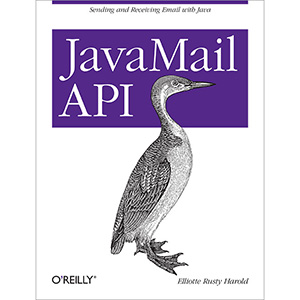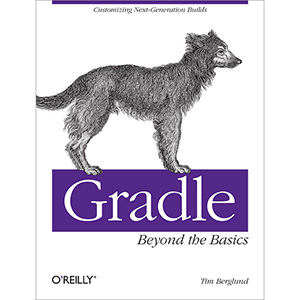Wow! eBook: CSS Fonts - 5 new eBooks |  |
- CSS Fonts
- Apache Sqoop Cookbook
- Enterprise Data Workflows with Cascading
- JavaMail API
- Gradle Beyond the Basics
| Posted: 06 Aug 2013 09:22 AM PDT
Book DescriptionFrom custom fonts to ad-hoc font families you assemble out of a variety of individual faces, CSS 3 gives you more typographic options than ever before. This concise guide shows you how to use CSS properties to gain a fine-grained and wide-ranging influence over how you display fonts on the Web. Short and sweet, this book is an excerpt from the upcoming fourth edition of CSS: The Definitive Guide. When you purchase either the print or the ebook edition of Fonts, you'll receive a discount on the entire Definitive Guide once it's released. Why wait? Learn how to choose and manipulate fonts right away.
Table of Contents About the Author Book Details
Related Books
The post CSS Fonts appeared first on Wow! eBook. |
| Posted: 06 Aug 2013 09:19 AM PDT
Book DescriptionIntegrating data from multiple sources is essential in the age of big data, but it can be a challenging and time-consuming task. This handy cookbook provides dozens of ready-to-use recipes for using Apache Sqoop, the command-line interface application that optimizes data transfers between relational databases and Hadoop. Sqoop is both powerful and bewildering, but with this cookbook's problem-solution-discussion format, you'll quickly learn how to deploy and then apply Sqoop in your environment. The authors provide MySQL, Oracle, and PostgreSQL database examples on GitHub that you can easily adapt for SQL Server, Netezza, Teradata, or other relational systems.
Table of Contents Book Details
Related Books
The post Apache Sqoop Cookbook appeared first on Wow! eBook. |
| Enterprise Data Workflows with Cascading Posted: 06 Aug 2013 09:16 AM PDT
Book DescriptionThere is an easier way to build Hadoop applications. With this hands-on book, you'll learn how to use Cascading, the open source abstraction framework for Hadoop that lets you easily create and manage powerful enterprise-grade data processing applications—without having to learn the intricacies of MapReduce. Working with sample apps based on Java and other JVM languages, you'll quickly learn Cascading's streamlined approach to data processing, data filtering, and workflow optimization. This book demonstrates how this framework can help your business extract meaningful information from large amounts of distributed data.
Table of Contents Appendix A. Troubleshooting Workflows Book Details
Related Books
The post Enterprise Data Workflows with Cascading appeared first on Wow! eBook. |
| Posted: 06 Aug 2013 09:13 AM PDT
Book DescriptionSend and receive email from Java applications by using the JavaMail API. With this concise book, you'll learn how to communicate with existing SMTP, POP, and IMAP servers, and how to write your own. Whether you need to build an email-centric application like a mailing list manager or simply add email notification to a larger product, JavaMail is the answer. Packed with code examples, this book shows you how JavaMail enables you to avoid low-level protocol details, so you can focus on what you actually want to say in a message.
Table of Contents Book Details
Related Books
The post JavaMail API appeared first on Wow! eBook. |
| Posted: 06 Aug 2013 09:01 AM PDT
Book DescriptionIf you're familiar with Gradle's basics elements—possibly through the author's previous O'Reilly book, Building and Testing with Gradle—this more advanced guide provides the recipes, techniques, and syntax to help you master this build automation tool. With clear, concise explanations and lots of ready-to-use code examples, you'll explore four discrete areas of Gradle functionality: file operations, custom Gradle plugins, build lifecycle hooks, and dependency management. Learn how to use Gradle's rich set of APIs and Groovy-based Domain Specific Language to customize build software that actually conforms to your product. By using the techniques in this book, you'll be able to write domain-specific builds that support every other line of code your team creates.
Table of Contents Book Details
Related Books
The post Gradle Beyond the Basics appeared first on Wow! eBook. |
| You are subscribed to email updates from Wow! eBook To stop receiving these emails, you may unsubscribe now. | Email delivery powered by Google |
| Google Inc., 20 West Kinzie, Chicago IL USA 60610 | |





Tidak ada komentar:
Posting Komentar